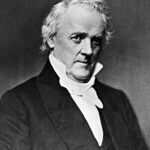President James Buchanan’s support for the Pony Express Route represented one of his administration’s most forward-thinking decisions. The initiative emerged as tensions rose between North and South in 1860.
The Pony Express Route Decision
Buchanan recognized that California’s isolation threatened national unity. Communication between the East Coast and West Coast took months by ship or wagon. The president endorsed the private venture that promised 10-day delivery across 1,966 miles. Federal contracts and postal agreements provided crucial backing for this ambitious project.
Implementation and Operations 📊
The service launched on April 3, 1860, connecting St. Joseph, Missouri to Sacramento, California. Riders changed horses every 10-15 miles at 184 relay stations. Each rider covered 75-100 miles before passing mail to the next courier. The route crossed treacherous terrain including mountains, deserts, and hostile territories.
Economic and Strategic Benefits 💰
The Pony Express Route dramatically accelerated business communications and news delivery. California gold miners and settlers gained vital connections to eastern markets. Political leaders could coordinate policies across vast distances more effectively than ever before.
Impact:
The Pony Express Route’s establishment created profound and lasting changes across multiple sectors of American society.
Communication Revolution 🌍
The service reduced transcontinental mail delivery from 20-25 days to just 10 days. News of Lincoln’s 1860 election reached California in record time. Business transactions accelerated dramatically across the continent. The improved communication helped prevent California’s potential secession during the Civil War crisis.
Western Development and Settlement
The Pony Express Route encouraged continued westward expansion and settlement. Isolated communities gained reliable connection to eastern relatives and businesses. The service proved that rapid transcontinental communication was achievable and profitable. Infrastructure improvements along the route benefited subsequent transportation developments.
Technological Legacy 📊
The Pony Express Route operated for only 18 months before telegraph lines replaced it. However, the route established critical transportation corridors still used today. The service demonstrated American ingenuity and determination during a national crisis. Many relay stations evolved into permanent settlements and towns. The initiative showed how government support could enable private innovation.
National Unity During Crisis ⚠️
The improved communication helped maintain federal authority across vast distances. California remained connected to Union politics during secession tensions. The service facilitated coordination between military commanders and Washington officials.
